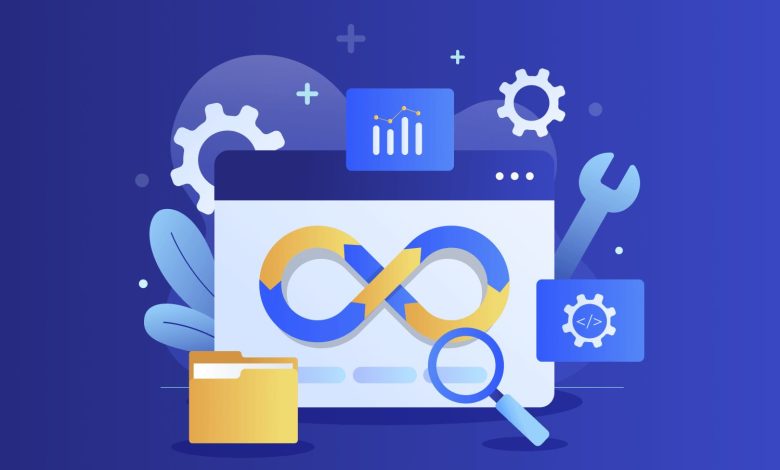DevOps Essentials: Streamlining Software Delivery and Operations

In today’s fast-paced digital landscape, organisations are constantly striving to deliver high-quality software applications at an accelerated pace. This is where DevOps comes into play. DevOps is a collaborative approach that combines software development (Dev) and IT operations (Ops) to streamline the entire software delivery lifecycle, from planning and development to deployment and operations. In this article, we will delve into the essentials of DevOps and how it enables organisations to achieve faster, more efficient software delivery and operations.
Understanding DevOps:
DevOps is not just a set of tools or practices, but a cultural shift that fosters collaboration, communication, and shared responsibility among development and operations teams. It breaks down the traditional silos between these teams and promotes a culture of continuous integration, continuous delivery, and continuous improvement. The key principles of DevOps include automation, collaboration, monitoring, and feedback loops. Training for DevOps is also the best way to understand it better.
Continuous Integration and Continuous Delivery (CI/CD):
One of the core tenets of DevOps is the implementation of CI/CD pipelines. Continuous Integration involves merging code changes frequently into a shared repository, followed by automated builds and tests to ensure the integrity of the codebase. Continuous Delivery takes it a step further by automating the deployment process, enabling organisations to release software updates quickly, reliably, and with minimal manual intervention.
Infrastructure as Code (IaC):
DevOps emphasises the use of Infrastructure as Code, where infrastructure provisioning and management are treated as software. By leveraging tools such as configuration management systems and cloud platforms, organisations can define and manage their infrastructure through code, enabling faster provisioning, scalability, and consistency across environments. This approach reduces the risk of manual errors and ensures reproducibility.
Automation and Orchestration:
Automation lies at the heart of DevOps. It involves automating repetitive, manual tasks across the software delivery lifecycle, including build, testing, deployment, and monitoring. By automating these processes, organisations can reduce human error, increase efficiency, and free up resources to focus on more valuable tasks. Orchestration tools further enhance automation by coordinating and managing complex workflows across different systems and environments.
Collaboration and Communication:
DevOps emphasises effective collaboration and communication between development, operations, and other stakeholders involved in the software delivery process. This includes breaking down communication barriers, sharing knowledge, and fostering a culture of shared responsibility. Collaborative tools and practices such as version control systems, issue tracking systems, and chat platforms facilitate seamless collaboration and ensure transparency.
Continuous Monitoring and Feedback:
DevOps promotes continuous monitoring of software applications in production. This involves collecting and analysing metrics, logs, and user feedback to gain insights into application performance, availability, and user experience. By continuously monitoring the application, organisations can proactively identify and address issues, make data-driven decisions, and drive improvements in the software delivery and operations processes.
Security and Compliance:
Security and compliance are integral aspects of DevOps. Organisations need to embed security practices throughout the software delivery lifecycle, including secure coding, vulnerability scanning, and access controls. Additionally, compliance requirements should be addressed by implementing audit trails, documenting processes, and ensuring data privacy and protection.
DevOps Culture and Leadership:
DevOps is not just about implementing tools and practices; it requires a cultural shift within organisations. Leaders play a crucial role in driving the DevOps transformation, fostering a culture of collaboration, trust, and continuous learning. They need to promote a growth mindset, empower teams, and provide the necessary resources and support to adopt and embrace DevOps principles.
Continuous Learning and Improvement:
DevOps is an ever-evolving field, with new tools, technologies, and practices emerging regularly. Continuous learning is essential for DevOps professionals to stay updated and adapt to changing trends. Professionals should stay engaged with the DevOps community, attend conferences, participate in workshops, and leverage online resources to enhance their knowledge and skills.
Benefits of DevOps:
Implementing DevOps practices and principles brings numerous benefits to organisations. Some of the key advantages include faster time-to-market, improved software quality, increased efficiency and productivity, reduced risk of failures, enhanced collaboration, and better alignment between development and operations teams. By streamlining software delivery and operations, organisations can respond quickly to market demands, deliver value to customers, and gain a competitive edge.
Conclusion
DevOps is a transformative approach that enables organisations to streamline software delivery and operations, fostering a culture of collaboration, automation, and continuous improvement. By implementing DevOps practices such as continuous integration and delivery, infrastructure as code, automation, and collaborative tools, organisations can achieve faster time-to-market, improved software quality, and increased efficiency. Embracing the DevOps culture and principles requires strong leadership, effective communication, and a commitment to continuous learning and improvement. Watch this video- DevOps tutorial for beginner to get started.


